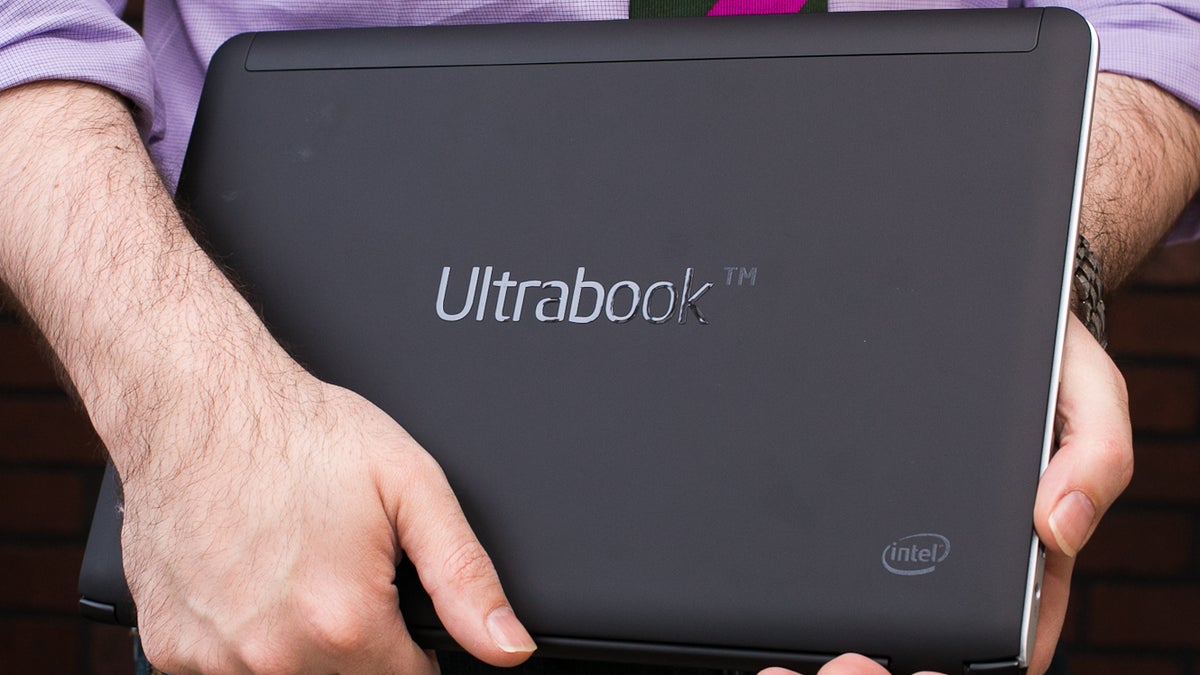Hands-on with Intel's new ultrabook-friendly Ivy Bridge CPUs
Intel's third-generation Core-i-series processors go mainstream with new dual-core Core i5 and Core i7 versions.

The first batch of Intel's third-generation Core-i-series processors(also known by the code name Ivy Bridge) arrived in late April. But, those initial chips only covered the very high end of the spectrum, being quad-core Core i7 CPUs destined for high-end gaming and multimedia laptops.
While more mainstream Ivy Bridge CPUs have been expected for some time, Intel has now officially revealed new details of the Core i5 and low-voltage Core i7 chips. We've been testing systems with some of the new processors, most notably the 1.8GHz Intel Core i5-3427U. This is a low-voltage mobile processor specifically targeted at ultrabooks, a category both Intel and PC makers are trying to expand.
The ultrabook, for the uninitiated, is a trademarked Intel marketing term that represents a list of hardware and software requirements for ultrathin laptops. There are specific rules for components, system height, screen size, and other factors, but the basic thrust is to create premium laptops that rival Apple's MacBook Air.
To date, we've liked a lot of the ultrabook hardware we've seen, but current models are all using second-generation Intel Core i-series CPUs, so they feel a bit dated now that we've been talking about Ivy Bridge for so long.
With the Core i5-3427U and other new dual-core CPUs, many of the same benefits we've seen in massive gaming systems such as the Origin Eon 17-S and Maingear EX-L 15 can now trickle down to superslim, highly portable laptops.
One of the biggest of those advantages is even more relevant for smaller laptops. Intel's new HD 4000 graphics replaces the previous HD 3000 version, and the company promises that you'll be able to play current high-end PC games without needing a separate Nvidia or AMD GPU. On the gaming rigs we've previously tested, that was mostly a moot point, as those laptops have powerful discrete graphics cards already.
On an ultrabook or other mainstream laptop without a separate GPU, HD 4000 becomes much more valuable. The ability to play more than the most basic PC games will help ultrabooks and other mainstream laptops become more full-fledged entertainment devices.
Intel provided a sample Core i5-3427U ultrabook with HD 4000 graphics for testing. We've run gaming tests on that system, several of the earlier quad-core Core i7 Ivy Bridge laptops, and a handful of other new dual-core Intel third-generation Core-i-series laptops that will be announced in the near future.
The Intel sample ultrabook ran Street Fighter IV at its native 1,600x900-pixel resolution at 21.4 frames per second. Other Ivy Bridge systems ran the same test at up to 33 frames per second with the help of powerful quad-core CPUs. Those may not sound like amazing frame rates, but previous second-generation Core i5 laptops with Intel's HD 3000 graphics usually ran the same test at about 13 frames per second.
Newer games, such as Skyrim or Diablo III, ran at playable, if not impressive rates, as long as detail levels were kept to lower settings. This isn't going to be a serious gamer's main way to play, but it's fine for travel or occasional dungeon runs. You can read a more in-depth discussion of Intel's HD 4000 graphics here.
Battery life gets less of a boost, but the second-generation Core i-series platform was such a big step forward for battery life that there's not as much headroom to make gains. Our Intel-provided generic 13-inch ultrabook ran for 5 hours and 6 minutes on our video playback battery drain test. That's an excellent score for a 13-inch laptop, and hopefully indicative of what we'll see in future ultrabooks. Ivy Bridge systems with standard voltage and/or Core i7 CPUs have run for an hour or two less in our tests, but those have generally been very good as well.
The new Intel third-generation CPUs are as follows. A "U" designation indicates low-voltage, "M" means standard voltage. The former is for ultrabooks and other superslim laptops; the standard chips will end up in regular midsize laptops.
Core i7
i7-3667U, i7-3517U, i7-3520M
Core i5
i5-3427U, i5-3317U, i5-3360M, i5-3320M, i5-3210M.
The list of previously released quad-core Core i7 processors can be found here. Stay tuned for full reviews of laptops using these new CPUs starting today, with the Lenovo ThinkPad X230, and continuing through the coming weeks.
Below are benchmark results comparing several laptops with new dual-core Ivy Bridge CPUs, contrasted with the Lenovo IdeaPad Y480, which has one of the Ivy Bridge quad-core Core i7 CPUs released several weeks ago.
(Shorter bars indicate better performance)
(Shorter bars indicate better performance)
(Shorter bars indicate better performance)
(Longer bars indicate better performance)
System configurations
Asus Zenbook UX32V
Windows 7 Home Premium (64-bit) w/ SP1; 1.9GHz Intel Core i7-3517U; 4GB DDR3 SDRAM 1333MHz; 1GB Nvidia GeForce GT 620M + 64MB (Dedicated) Intel HD 4000; 500GB Hitachi 5400rpm
Intel Ultrabook (Whitebox)
Windows 7 Home Premium (64-bit) w/ SP1; 1.8GHz Intel Core i5-3427U; 4GB DDR3 SDRAM 1333MHz; 64MB(Dedicated) Intel HD 4000; 240GB Intel SSD
Lenovo IdeaPad Y480
Windows 7 Home Premium (64-bit) w/ SP1; 2.3GHz Intel Core i7-3610QM; 8GB DDR3 SDRAM 1333MHz; 1GB Nvidia GeForce GT 640M LE + 64MB (Dedicated) Intel HD 4000; 750GB Western Digital 5400rpm
Lenovo Thinkpad X230
Windows 7 Professional (64-bit) w/ SP1; 2.6GHz Intel Core i5-3320M; 4GB DDR3 SDRAM 1333MHz; 64MB (Shared) Intel HD 4000; 320GB Hitachi 7200rpm

